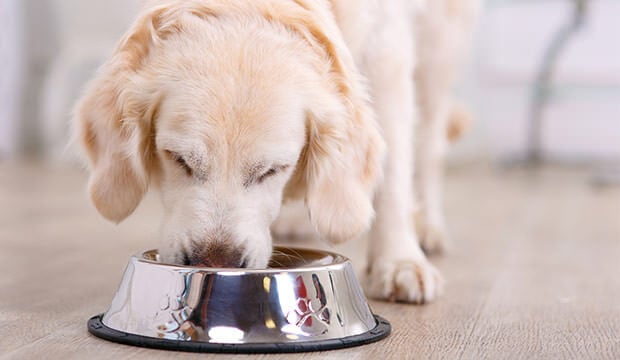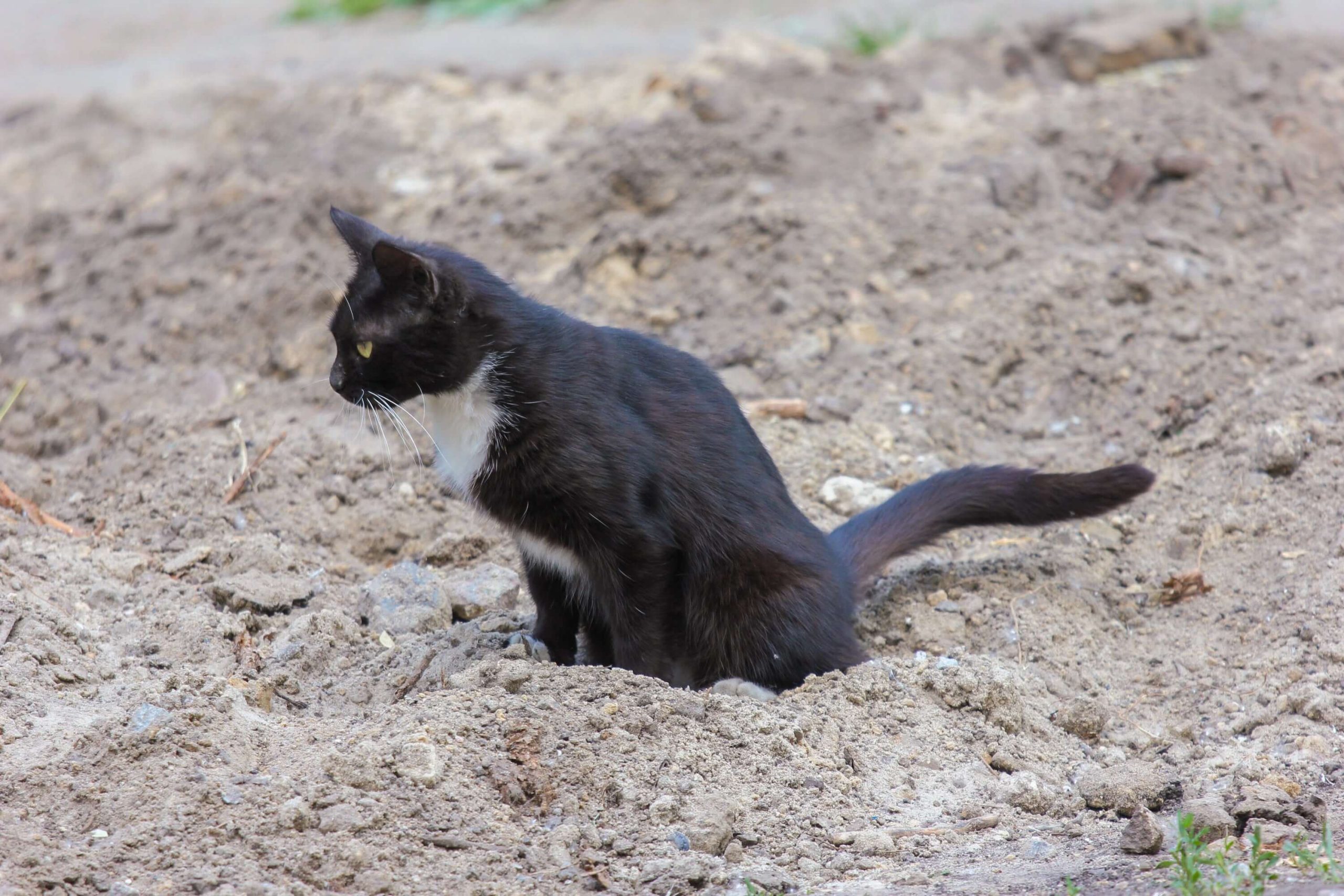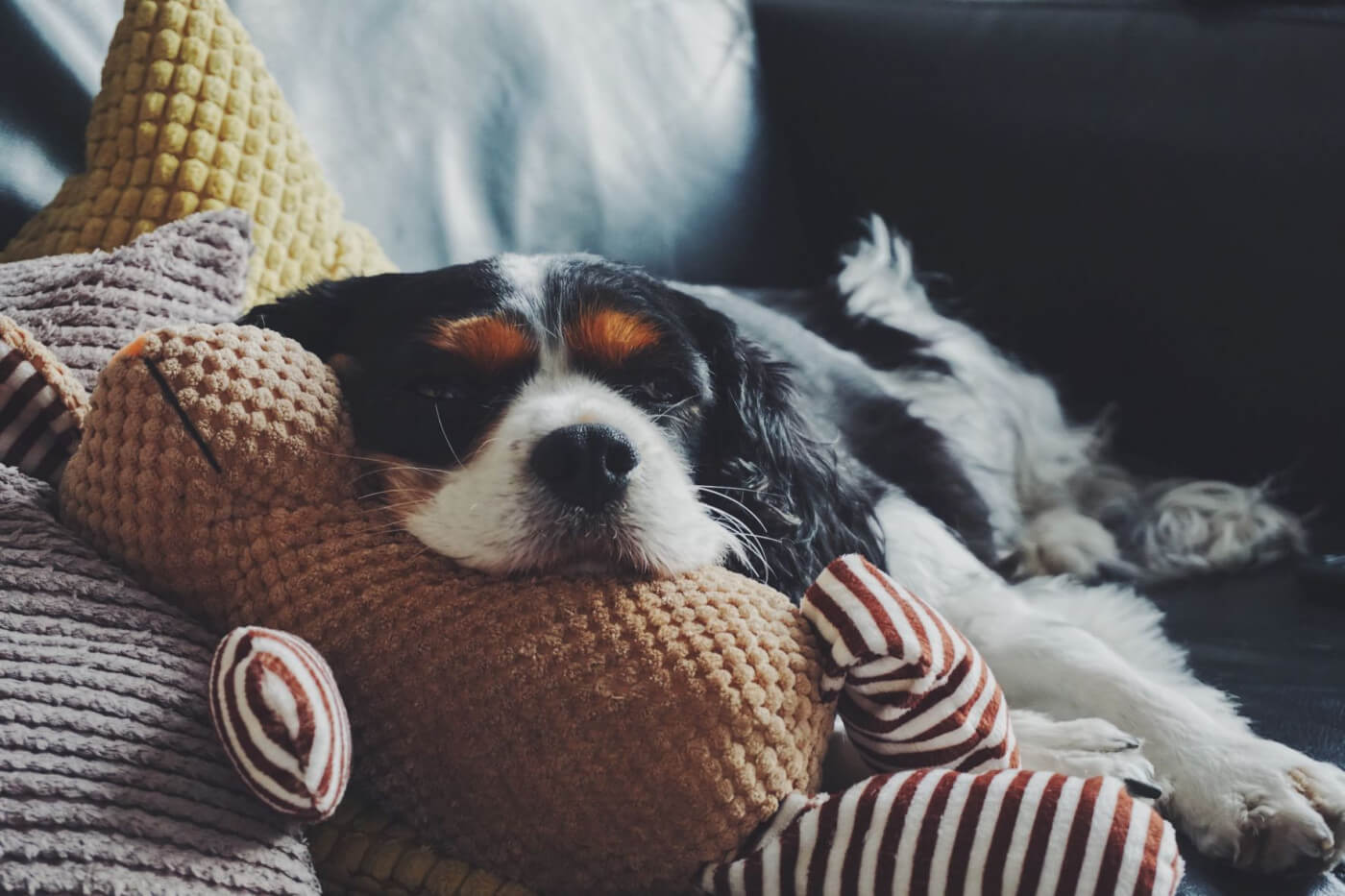
My dog seems ravenous, can I feed more than recommended on the bag?
July 27th 2023
This is a great question, but unfortunately it doesn’t have a simple answer as it really depends on a few factors:
- Is the dog overweight, underweight or an ideal weight?
- Is the dog actually hungry? And if this is a change in their normal appetite, what is causing it?
- Is the dog looking for more food for another reason? And what is that reason?
In this article we will look at why your dog might be hungry and whether you can feed larger amounts, but first let’s examine how the feeding amounts on a bag of food are calculated.
On-pack feeding amounts
The recommended feeding amounts on a bag of food are to be used as guidance. They are based on a dog with an average amount of energy and average calorie requirements. They usually give a range, so if you have an older, less active or neutered dog (all of which require less calories) you can feed the lower end of the recommended amount, and if your dog is young, very active and entire you can feed the higher recommended amount.
However, the calorie calculations are unable to take into account individual variations such as breed, sex or the environment the dog lives in. These can all make a difference. Therefore, the feeding amounts on a pack should be used as a starting point and then the food should be adjusted as necessary. Pet food companies including Vet’s Kitchen employ nutritionists that can help give you a more tailored feeding amount for your dog.
Before you increase the food
Before making any changes, it is good idea to be able to recognise signs of overfeeding or underfeeding. Overfeeding is far more common with over 50% of UK dogs being overweight or obese.
If you are overfeeding:
- You won’t be able to easily feel your dogs ribs – and you should be able to.
- You won’t be able to see your dog’s waist – there should be an abdominal tuck after the rib cage in dogs that are of ideal weight.
- Stools are often frequent or loose as the excess food is not properly digested.
- Dogs are flatulent because the excess food is not being properly digested.
- The dog becomes fussy and refuses food because it is not hungry.
If you are underfeeding:
- The ribs and spine will be prominent, or if your dog is long-coated there will be no fat covering the ribs.
- Your dog may lack energy.
- Your dog is likely to be hungry and may display unwanted behaviours such as scavenging, stealing food and counter-surfing. Hungry dogs are more likely to be vocal according to studies too.
Medical reasons for an increase in appetite
Any sudden changes in appetite should be investigated. It is normal for young puppies, especially during a growth spurt to eat more food and pregnant or nursing bitches, may eat up to three times more than normal. However, in adult or senior dogs a change in appetite can indicate a health problem and it is important to get that checked out. Conditions that cause an increased appetite include:
- Diabetes Mellitus.
- Worms.
- Cushing’s disease (Hyperadrenocorticism – an overactive adrenal gland).
- Malabsorption disorders such as Inflammatory bowel disease or Exocrine pancreatic insufficiency.
- Cancer – although this can reduce appetite, some dogs will eat more.
- Cognitive Dysfunction (dementia) dogs may forget that they have already eaten.
Increased appetite in healthy dogs
If your dog has no medical reason for the increased appetite and is underweight or extremely active, then you can increase the amount you are feeding them – even if this is more than is recommended on the bag of food. However, just watch out for signs you are giving too much such as flatulence, loose or frequent stools.
Another option for underweight dogs is to feed them a higher calorie food, such as a puppy diet or a working dog food either on its own or mixed in as a proportion of their diet. This can help increase their calorie intake without feeding them larger amounts.
However, both options should be monitored to ensure that it continues to be the correct feeding regime for the dog.
If your dog is hungry, has no medical issues and is not underweight then there are things you can do to help increase satiety without adding calories:
- Swap to a wet food as it is more filling or substitute a portion of the dry food for wet food.
- Soak dry food in water and let it swell up before feeding.
- Add in some water-rich low-calorie extras which include cucumber, watermelon or courgette.
- Try feeding more frequent meals (but don’t increase the overall daily amount).
In conclusion, determining whether you can feed your dog more than the recommended amount on the bag depends on several factors. The feeding amounts on the packaging are merely guidelines and should be adjusted based on individual factors such as the dog’s weight, age, activity level, and specific nutritional needs.
If you are unsure how much to feed your dog, please do get in touch. Our nutritionist can be contacted via nutrition@vetskitchen.co.uk or 01793 887555.

 Shop Dog
Shop Dog
 Shop Cat
Shop Cat
 Vet Know-how
Vet Know-how Pet Clubs
Pet Clubs Contact
Contact


